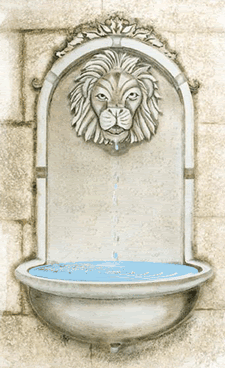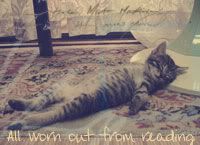The High Fairies
These High Fairies display a combination of characteristics which we do not easily digest.
 On the one hand, whenever they are described we are struck by their hard, bright, and vividly material splendour. We may begin, not with a real Fairy, but with one who merely looked as though he came 'of faerie', from the fairy realm. This is the young lady-killer in Gower (v, 7073). He is curled and combed and crowned with a garland of green leaves; in a word, 'very well turned out'. But the High Fairies themselves are very much more so. Where a modern might expect the mysterious and the shadowy he meets a blaze of wealth and luxury. The Fairy King in Sir Orfeo comes with over a hundred knights and a hundred ladies, on white horses. His crown consists of a single huge gem as bright as the sun (142-52). When we follow him to his own country we find there nothing shadowy or unsubstantial; we find a castle that shines like crystal, a hundred towers, a good moat, buttresses of gold, rich carvings (355 sq.). In Thomas the Rymer the Fairy wears green silk and a velvet mantle, and her horse's mane jingles with fifty-nine silver bells. Bercilak's costly clothes and equipment are described with almost fulsome detail in Gawain (1512-220). The Fairy in Sir Launfal has dressed her waiting women in 'Inde sandel', green velvet embroidered with gold, and coronets each containing more than sixty precious stones (232-9). Her pavilion is of Saracenic work, the knobs on the tent-poles are of crystal, and the whole is surmounted by a golden eagle so enriched with enamel and carbuncles that neither Alexander nor Arthur had anything so precious (266-76).
On the one hand, whenever they are described we are struck by their hard, bright, and vividly material splendour. We may begin, not with a real Fairy, but with one who merely looked as though he came 'of faerie', from the fairy realm. This is the young lady-killer in Gower (v, 7073). He is curled and combed and crowned with a garland of green leaves; in a word, 'very well turned out'. But the High Fairies themselves are very much more so. Where a modern might expect the mysterious and the shadowy he meets a blaze of wealth and luxury. The Fairy King in Sir Orfeo comes with over a hundred knights and a hundred ladies, on white horses. His crown consists of a single huge gem as bright as the sun (142-52). When we follow him to his own country we find there nothing shadowy or unsubstantial; we find a castle that shines like crystal, a hundred towers, a good moat, buttresses of gold, rich carvings (355 sq.). In Thomas the Rymer the Fairy wears green silk and a velvet mantle, and her horse's mane jingles with fifty-nine silver bells. Bercilak's costly clothes and equipment are described with almost fulsome detail in Gawain (1512-220). The Fairy in Sir Launfal has dressed her waiting women in 'Inde sandel', green velvet embroidered with gold, and coronets each containing more than sixty precious stones (232-9). Her pavilion is of Saracenic work, the knobs on the tent-poles are of crystal, and the whole is surmounted by a golden eagle so enriched with enamel and carbuncles that neither Alexander nor Arthur had anything so precious (266-76).In all this one may suspect a certain vulgarity of imagination--as if to be a High Fairy were much the same as being a millionaire. Nor does it obviously mend matters to remind ourselves that Heaven and the saints were often pictured in very similar terms. Undoubtedly it is naif, but the charge of vulgarity perhaps involves a misapprehension. Luxury and material splendour in the modern world need be connected with nothing but money and are also, more often than not, very ugly. But what a medieval man saw in royal or feudal courts and imagined as being outstripped in 'faerie' and far outstripped in Heaven, was not so. The architecture, arms, crowns, clothes, horses, and music were nearly all beautiful. They were all symbolical or significant--of sanctity, authority, valour, noble lineage or, at the very worst, of power. They were associated, as modern luxury is not, with graciousness and courtesy. They could therefore be ingenuously admired without degradation for the admirer.
~C.S. Lewis, The Discarded Image, Chapter VI: The Longaevi (1964)
__________________________
On this day:
1950 Lewis receives his first letter from American fan Joy Davidman Gresham.




0 Comment(s):
Post a Comment
<< Home